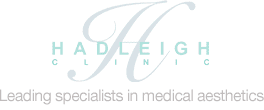- Home
- Treatments
- Aqualyx™
- Juvederm Ultra
- Sclerotherapy
- Anti-wrinkle treatment
- Laser 360
- Silhouette Soft
- Coolsculpting
- Dermal fillers
- Laser hair removal
- Skin hydration therapy
- Dermaroller
- Laser skin resurfacing
- Skin peels
- Excess sweating
- Liquid facelift
- Skin surgery
- Gel needling lift
- Obagi skin treatments
- Skin tightening
- IPL acne treatment
- Pixel™ Laser Resurfacing
- Soprano hair removal
- IPL skin rejuvenation
- Restylane
- Tear trough
- Jawline slimming
- About us
- Our clinics
- Prices
- Special promotions
- In the news
- Our blog
- Home
- Treatments
- IPL Acne
- Treatment Info
Acne
Fighting acne is no longer a losing battle
Treatment Info
What is Acne?
Acne is a very common skin condition characterised by comedones (blackheads and whiteheads) and pus-filled spots. Though commonly considered a teenage problem, 20% of all adults suffer from varying degrees of acne. For many the physical symptoms of acne can be hard to deal with-spots, inflammation and scarring, however acne also has a large negative psychological effect on sufferers, impacting on their confidence and self esteem.
What causes Acne?
The sebaceous (oil-producing) glands of people prone to acne are particularly sensitive to normal blood levels of a hormone called testosterone, which is present in both men and women. This causes the glands to produce an excess of oil. At the same time, the dead skin cells lining the pores are not shed properly and clog up the follicles. These two effects result in a build-up of oil producing blackheads and whiteheads. The acne bacterium (Propionibacterium acnes) lives on everyone's skin, usually causing no problems, but, in those prone to acne, the build up of oil creates an ideal environment in which these bacteria can multiply. This triggers inflammation and the formation of red or pus-filled spots.
How does Intese Pulsed Light (IPL) treat Acne?
Described as the most significant advancement in acne treatment for decades, clinical studies have shown IPL treatment to be safe, fast and effective. The Intense Pulsed Light system releases yellow, green and red light that is emitted in a series of short pulses. The yellow/green light destroys the bacteria (P.acnes) that live in the skin and cause acne (this is how natural sunlight helps to improve acne), while the red light directly targets the overactive sebaceous glands. This targeted heating deep in the skin causes shrinkage of the inflamed sebaceous glands (preventing their over-production of sebum) and stimulates collagen production, boosting the healing process to reduce scarring and improve skin tone.
How does Laser Skin Resurfacing treat Acne scarring?
Further information on Pixel™ Laser Resurfacing.
Preparing for the treatment.
Prior to any treatment you will have a full consultation with one of our Specialist Aesthetic Nurses. A pre-treatment test patch will then be carried out so that the laser parameters are matched to your skin type to prevent any unexpected skin reactions occurring during your full treatment.
What is the treatment like?
While pain tolerance is an individual matter, most people experience no more than a slight stinging sensation during the treatment. In addition to the laser's special cooling tip we also have a separate state-of-the-art cooling machine (Cryo 6) to cool the skin, before, during and after the treatment to make the experience as comfortable as possible and to minimise any skin reactions.
After the treatment.
The treated area may be red immediately after the treatment. However, most patients experience no side effects and the redness usually disappears within a couple of hours. Normal activities can be resumed immediately after the treatment.
Learn more about the IPL acne treatment process (including pre and post treatment information).
How many treatments will I need?
The number of treatments required will vary depending on the severity of your acne and whether IPL treatment is carried out alone or in conjunction with other treatments e.g. Obagi CLENZIderm, Glycolic acid Peels or Pixel Skin resurfacing. As a stand alone procedure, 6-10 treatments may be required with treatments taking place once or twice a week.
Who is suitable for the IPL Acne treatment?
Almost everyone can be treated, apart from very dark skinned or tanned individuals. If you do have a tan you should wait at least 2 weeks after your last UV exposure to ensure there is no residual activity in the pigment producing cells. Pregnant women or people taking the acne treatment Roaccutane should not be treated.
Are there any side-effects?
Side effects from IPL are extremely rare due to the advanced technology of the IPL we use and the medical experience of the practitioner carrying out your treatment. Whilst we do everything we can to avoid adverse reactions, even with the best care, they can still occur in certain individuals because of skin sensitivities, genetic variance and allergies to light treatments, which are impossible to predict. The most common temporary side effect is redness of the skin which can vary depending on your skin type and the degree of aggressiveness of your treatment (which you and your laser specialist have decided on). In rare cases there can be pigmentation changes, which typically resolve spontaneously, however in very rare cases it can be permanent.

